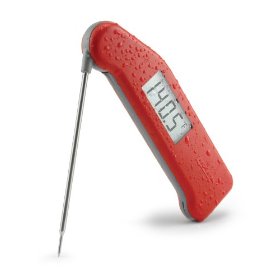Holiday Food Safety
The holidays are wonderful times for getting together with family, friends, and neighbors. Much of what we do during the holidays centers around food. One thing that can ruin holiday cheer and good times faster than any other is someone getting sick from the food – not because of overeating – but from food that has been improperly handled. When preparing and handling foods this holiday season, make sure you pay attention to food safety rules.
Foodborne infections cause millions of people in the United States to get sick each year. Infants and young children, pregnant women, those with weakened immune systems, and older adults are at higher risk for severe infections. The most common foodborne diseases are associated with meat, poultry, and fish.
No matter your level of cooking expertise, taking a few simple steps can help reduce the risk of foodborne illness during your holiday celebrations this year.
The following are some basic practices that will help insure the only thing your guests may need to recover from is having too much fun.
CLEANLINESS
It is essential to keep everything in your kitchen clean: counters, hands, utensils, and dishes. Wash your hands, before, during, and after handling food, especially when switching between preparing different types of foods (for example from handling raw meat to preparing fresh produce). Use hot water and soap to clean, and then rinse with fresh water. Using a bleach solution works well to sanitize your kitchen. The American Chemistry Council recommends a concentration of 3/4 cup bleach to one gallon of water for disinfecting surfaces. Also, wash all fresh produce in water to remove the dirt and harmful organisms that can come home with them from the store and even the farm.
CROSS CONTAMINATION
Avoid cross contamination by keeping meats and fresh produce separate from each other and from cooked foods. Use separate utensils and cutting boards for each or sanitize between uses. Never store raw meat above fresh produce in your refrigerator because the juices could leak out onto the produce and create a hazard.
PROPER COOKING
Make certain all foods are cooked to the proper internal temperature using an instant read thermometer like the one shown below.
Turkey, stuffing, casseroles, and leftovers should be cooked to 165 degrees Fahrenheit; beef, veal, and lamb roasts should be cooked to 145; and ham, pork, and egg dishes should be cooked to 160.
SERVING AND STORING
Refrigerate food quickly after serving. Keep the refrigerator at 40 degrees Fahrenheit or below to prevent bacteria from growing. Leftovers should be refrigerated within two hours of being cooked. Never thaw a turkey, ham, or other frozen meat at room temperature. Thawing should be done in the refrigerator. When food is in the “danger zone” – between 40 and 140 degrees Fahrenheit – foodborne bacteria multiply.
FOUR SIMPLE STEPS
Food safety can be as simple as: keeping everything in your kitchen clean; avoiding cross contamination; cooking to the proper temperature; and after preparation keeping hot foods hot and cold foods cold – which means below 40 degrees for cold foods and above 140 degrees for hot foods.
ADDITIONAL RESOURCES
For more information on food safety, here are some helpful links:
You can also check out the latest food safety updates by visiting this site:
We at LukewarmLegumes hope you have a happy, safe, and food healthy Holiday Season.





